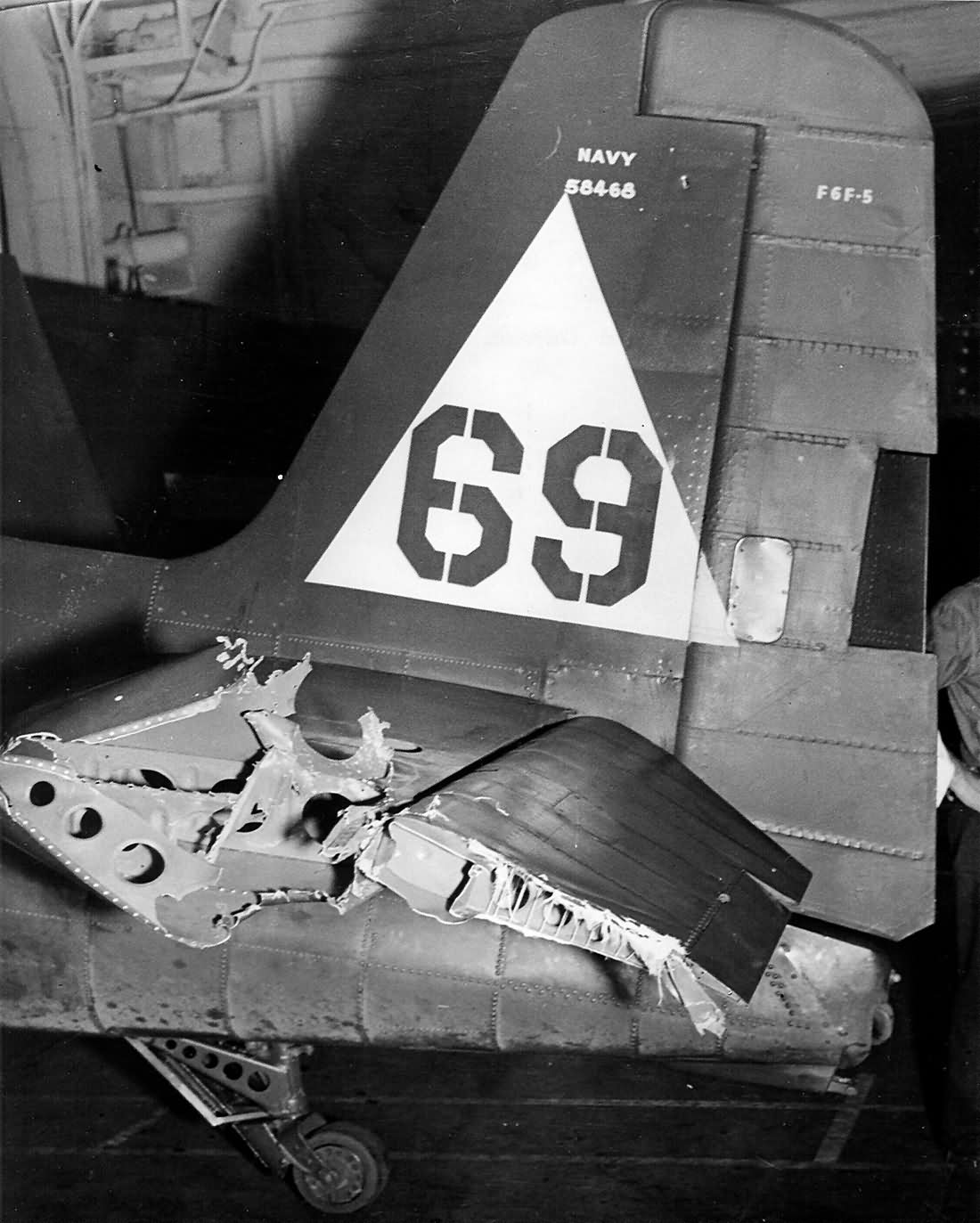The tail group of the Hellcat was designed for stability and precise control during flight. Here’s an in-depth look at its structure and components:
Tail Structure
- Horizontal Stabilizers: The Hellcat had a pair of fixed horizontal stabilizers, one on each side of the tail, which played a key role in stabilizing the aircraft’s pitch. These stabilizers were mounted with a 1.5-degree positive incidence angle relative to the fighter’s thrust line. This slight angle improved the plane’s overall balance and helped maintain level flight.
- Vertical Stabilizer: The fixed vertical stabilizer was positioned at the tail’s centerline, providing stability for the aircraft’s yaw, or side-to-side movement.
Spar and Rib Construction
- Aft Spar: All stabilizers (both horizontal and vertical) were built around a single aft spar, which provided the primary structural strength. Ribs extended forward from the spar, creating the shape and form of the stabilizers. The leading edge of each stabilizer was curved and reinforced.
- Skin: The stabilizers were covered in flush-riveted metal skin, enhancing the aerodynamic performance and durability of the aircraft’s tail.
Control Surfaces
- Elevators: Attached behind the horizontal stabilizers were the elevators, which were the primary control surfaces responsible for adjusting the pitch (nose up or down). The elevators were connected to the pilot’s control stick, allowing for precise control in flight.
- Rudder: The rudder was mounted on the vertical stabilizer, and it controlled the aircraft’s yaw. The pilot operated the rudder using the rudder pedals at their feet.
- Hinges and Balance: Both the elevators and the rudder were mounted with hinges and were balanced control surfaces. This balance helped reduce the forces the pilot needed to exert on the controls, making the aircraft easier to fly, especially during intense maneuvers.
Construction of Control Surfaces
- The control surfaces (elevators and rudder) were constructed with a flanged spar and internal ribs, giving them structural integrity. These surfaces were mostly covered with fabric, except for the leading edge, tip, and trim tabs, which were metal-skinned. The fabric covering helped keep the weight down while still being robust enough to handle combat conditions.
Trim Tabs
- Each control surface (elevators and rudder) had a single trim tab. The trim tabs allowed the pilot to make small adjustments to the flight controls without constantly exerting force. The trim tabs were adjustable from the cockpit, providing the pilot with the ability to fine-tune the aircraft’s pitch and yaw for smoother flight and improved handling.
In summary, the tail group of the Hellcat was a well-balanced design that contributed to its exceptional stability and maneuverability. The combination of strong spars, lightweight materials, and precise control surfaces made the Hellcat a highly effective fighter in combat.
